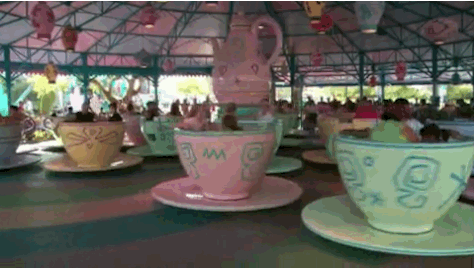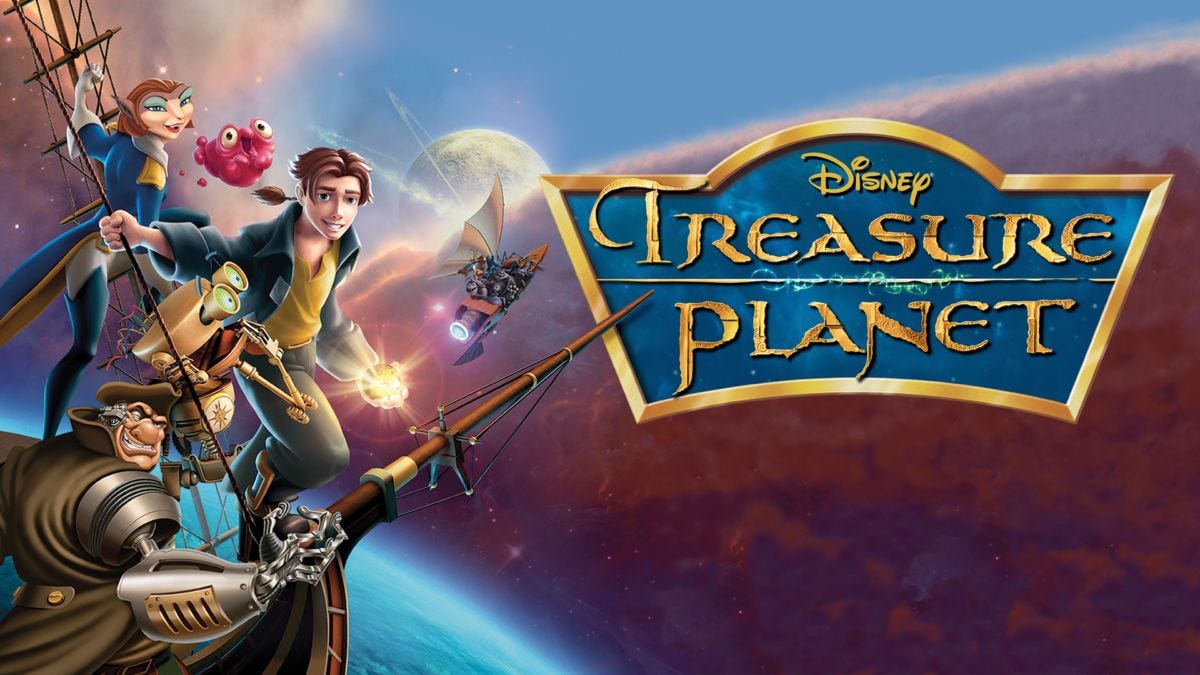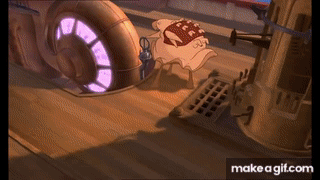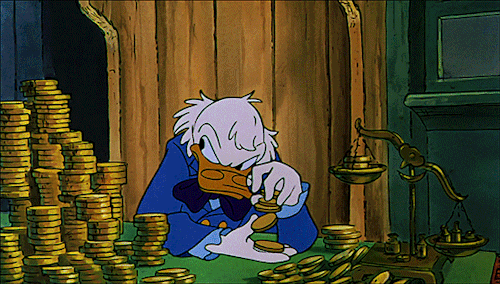Treasure Island, released by Walt Disney Animation Studios in 2002, is a science-fiction adaptation of the Robert Louis Stevenson classic Treasure Island. Troubled youth Jim Hawkins has always loved stories of space pirates and treasure, but when a dying pirate gifts him a star map that may lead to the legendary Treasure Planet, Jim sets out on the adventure of a lifetime. With a ship captained by the formidable Captain Amelia and a crew led by the cyborg John Silver, Jim must face the perils of space and a treacherous crew to find the legendary treasure.
One of the things required on a sailing ship out in the galaxy is some form of gravity, otherwise the crew would just float off into space. The ships on Treasure Planet are advanced enough that they provide their own artificial gravity. (And also their own atmosphere, otherwise everyone would immediately die from the lack of oxygen, the extreme cold, and the immediate evaporation of all our internal liquids, thanks to the decrease in boiling temperature resulting from space’s absence of pressure.)
Although this film is science fiction, scientists have already created artificial gravity. It’s what the astronauts on the International Space Station use, right? Well, no. The astronauts on the International Space Station actually float. And although scientists know how to create artificial gravity, it’s not in the way it’s imagined in Treasure Planet. Some sci-fi movies, however, do have the right idea. If you’ve ever seen a fictional space station spinning slowly through the stars, you’ve seen the generation of artificial gravity through centrifugal force. Centrifugal force is a force that seems to pull a rotating body or something on a rotating object away from the center of rotation. This is the force you feel when you’re on a spinning ride, finding yourself sliding to one side of the ride vehicle and probably crushing the person on that side.

Centrifugal force is also called centrifugal acceleration, and Einstein showed that gravity and acceleration are identical, so by using centrifugal acceleration, you can generate artificial gravity. A small ship would have to spin very fast to achieve a level of gravity similar to Earth’s, while a large ship would only have to spin slowly. Either way, force would pull a person towards the outer wall, which would become the floor, and they could go on their way as usual.
However, it would take a lot of material and effort to create a space station big enough to create the level of centrifugal force that we’re used to. Using the numbers from the launches of materials used to build the International Space Station, engineers estimate that it would cost about $5 billion using today’s technology, and that’s assuming that there’s even enough material available to build such a large structure: they estimate that about a decade’s worth of aluminum production would be needed, driving up the price of aluminum and further increasing the cost of the station.
But astronauts are fine without gravity, right? The lack of gravity in space allows for some pretty amazing feats, such as moving heavy objects with one finger and crazy acts of acrobatics. But there are also health problems associated with weightlessness. Muscle atrophy, bone loss, and circulatory problems increasing the risk of heart attacks have all been noted in astronauts returning to Earth. These health issues are currently mitigated by regimented exercise programs for astronauts during a mission, using specific resistive and aerobic exercises to maintain bone, muscle, and cardiovascular health while in space.
Despite the significant costs and the large number of materials needed to create artificial gravity in space, advances in space travel may mean that these downsides are outweighed by the need to prevent negative health effects. And as space travel advances, it’s certain that other technologies will as well, potentially providing more feasible options for creating artificial gravity. For now, though, we’ll have to settle for our usual Earth gravity and simply dream of the day where we can ride flying surfboards in space.
What’s your favorite movie or show set in space? Are you a fan of spinning rides at theme parks, or do you prefer to sit those out? Have you seen Treasure Planet? Let me know in the comments below!









